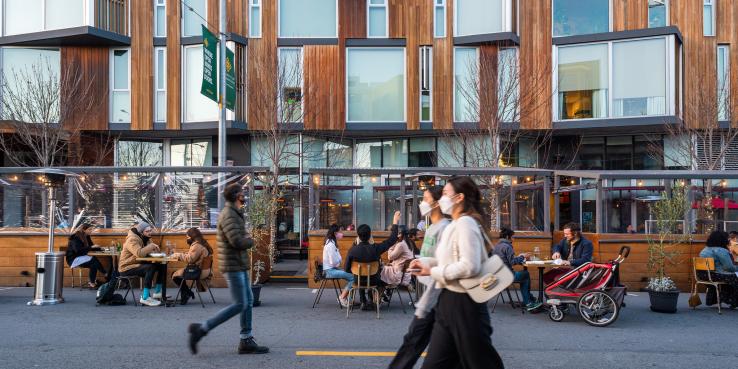Design interventions like parklets have often been regarded as little more than whimsical additions to our streetscapes — that is, until the COVID-19 pandemic forced cities to rethink how they utilize the public realm. Almost overnight, municipalities around the world began to reformulate their paved spaces with intentionality, pivoting streets and sidewalks to better accommodate outdoor gathering. The result, the adoption of parklets, sidewalk cafes, slow streets and more on a massive scale, has encouraged residents to reimagine their relationship to the built world around them and dream big about what these previously overlooked assets could become. Come hear from three cities, whose own attempts at providing this new form of social infrastructure have been internationally lauded, about what the future holds for the public realm. This digital discourse will be moderated by John Bela.
Co-presented by APA Northern California.
+ John Bela / urbanist, designer and artist
+ Rachel Magnusson / City of Vancouver
+ Warren Logan / City of Oakland
+ Alyse Nelson / Seattle Department of Transportation
1 AICP CM available for APA member attendees.
1 Learning Unit available for AIA member attendees.
AIA Learning Objectives:
- Identify the fundamental components of successful parklets, slow streets and other public realm design elements.
- Understand applicable approaches in designing social infrastructure in the public realm from around North America.
- Learn how to design these spaces with COVID-19 in mind.
- Determine how to navigate regulatory hurdles in the design, application and long-term use of these projects.
